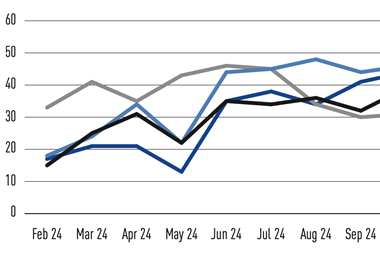Will Slovakia’s pension’s reform ensure the system’s sustainability? This is the question the International Monetary Fund (IMF) posed in a recent report*. The Fund itself believes that in part it does. In the case of long-term sustainability, the IMF argues that reforms to the first pillar will reduce the deficit of the Social Insurance Agency (SIA), but do not go far enough. The equalisation of male and female retirement age, for instance, to 60 years, will along with other measures, reduce the budget deficit to around 2% of GDP. Raising the retirement age to 63, which is still low by OECD standards, will cut the deficit by a further half to one percentage point.
The IMF also notes that a commitment to maintaining the pensions value while not actually increasing it – the new system indexes benefits growth to the lower of inflation and average wages – while linking the final pensions entitlement to average wages at the time of retirement, may encourage more workers to delay retirement. If the trend in wages is for strong growth, it pays to delay retirement. However, as the IMF notes elsewhere in its report, compared with countries with higher retirement ages, early retirement is not common in Slovakia. On a more positive note, the stronger linkage between lifetime earnings and final pensions should encourage more workers into the formal economy and boost contributions, which would be seen increasingly as insurance and less as tax.
Medium-term sustainability centres around the proposed introduction of the second pillar. The transition costs of diverting contributions from the first to the second pillar will cost the budget around 1% of GDP, despite the cushion of the proceeds from the gas privatisation. At the same time the outgoing government, working towards an eventual adoption of the Euro, committed itself to reaching the Maastricht budget deficit criterion of less than 3% of GDP by 2006.
The Fund is predictably an enthusiastic supporter of a compulsory funded second system, with some qualified reservations. As the report states, “The shift to funded pensions is not in itself a panacea for the demographic problem but can facilitate adjustment, as well as promoting old-age income security by diversifying risks and assisting the development of Slovak capital markets.” The Fund’s arguments are that future retirees have the benefit of both PAYG and funded sources of pensions, the latter providing higher rates of return and being less subject to political pressures.
Meanwhile, the reasoning goes, a new group of institutional investors deepens the local capital markets. This was the rationale behind the 5% overseas investment limit imposed on Poland’s second pillar funds when they launched in 1999, and it worked to the extent that Polish pensions funds have become big players on the local Warsaw Stock Exchange. Pension fund returns for individuals, however, have not been encouraging. Given that the third pillar funds in Slovakia have a 15% overseas limit, Slovak second-pillar funds could well face tighter constraints. However, the local stock market pales in comparison to Warsaw in size and turnover, even allowing for the fact that Poland’s population is more than seven times the size of Slovakia’s.
Governments, or rather future budgets, undoubtedly benefit from second-pillar systems. As the IMF report states: “funded pensions systems may also have political economy advantages, being self-adjusting to shocks and avoiding locking in the unsustainable benefit entitlements that can arise in PAYG systems.” Time will tell which, if any of the central European countries participating in the three-pillar experiment have created systems that also provide an adequate income for their retirees.
* Slovak Republic: Selected Issues and Statistical Appendix; International Monetary Fund Country Report No. 02/210, September 26, 2002.












No comments yet